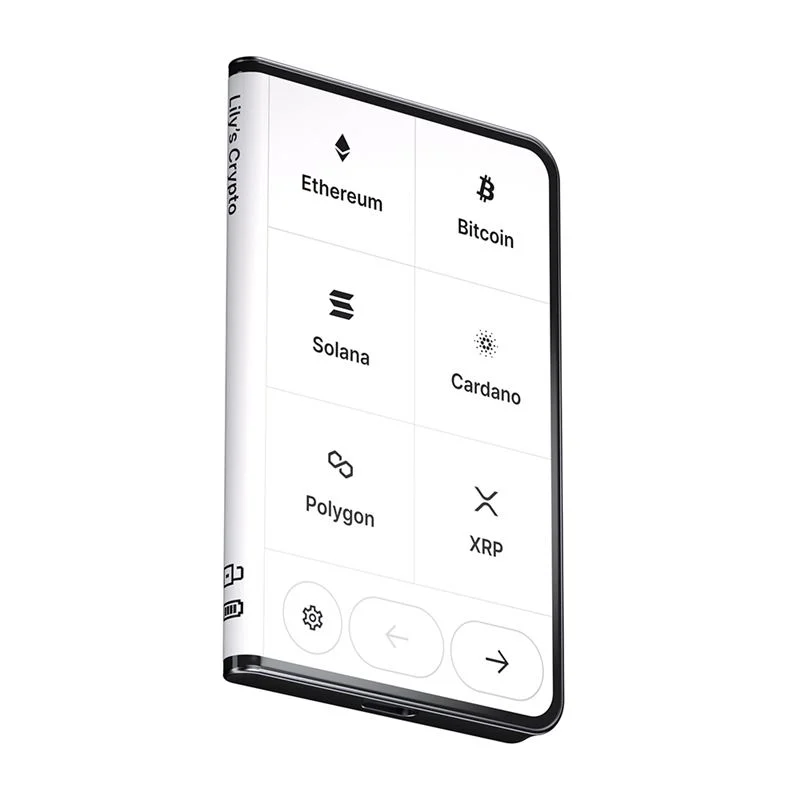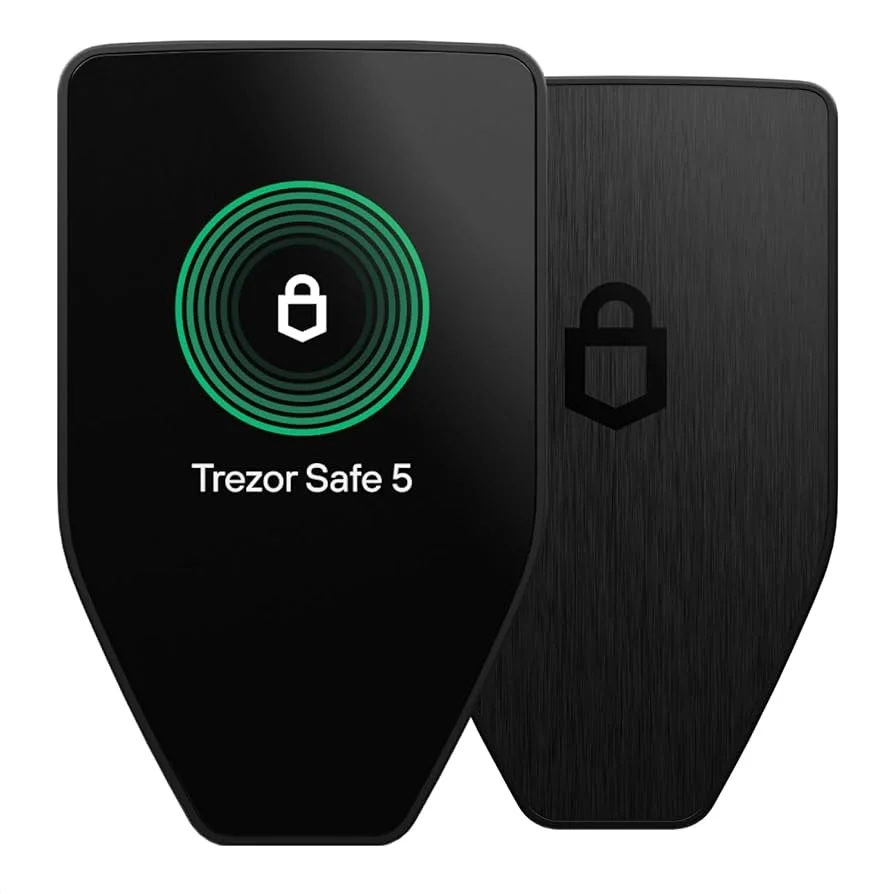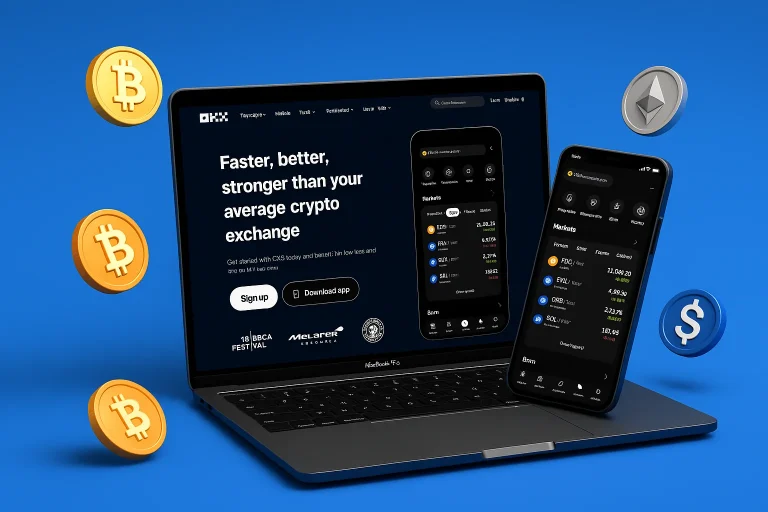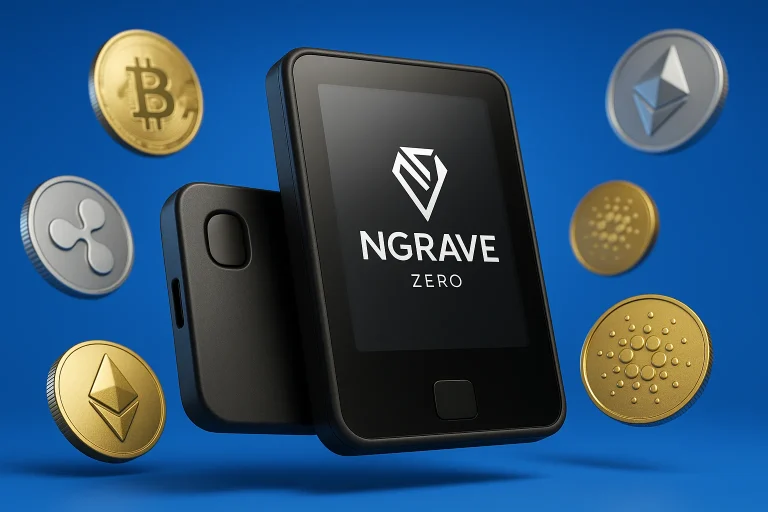Nearly every hardware wallet on the market has, at some point, claimed to be “premium.” Brands like Ledger and Trezor have built reputations around advanced protection for private keys; yet, for many users, these devices feel like iterations rather than innovations.
With more cyber threats emerging and fake wallets flooding the market, crypto investors are demanding verifiable security measures rather than recycled marketing terms.
When the Keystone introduced the Keystone 3 Pro, it joined this conversation, claiming to offer “next-generation” security. But as with every new release, skepticism followed. Is it truly the evolution of cold wallets, or just another rebrand of the same formula with a higher price tag and polished interface?
This Keystone 3 Pro review cuts through the hype to examine whether this premium hardware wallet lives up to its promise. We analyze its key features, advanced security features, and real usability to see if it stands out among other wallets or simply blends in.
From its open-source firmware and QR code scanning system to its compatibility with multiple wallets, this review examines whether the Keystone 3 Pro justifies its premium status or merely markets it.
Table of contents
- What is Keystone 3 Pro?
- Keystone 3 Pro Review: Security Features and Architecture
- Keystone 3 Pro Review: Supported Assets
- Keystone 3 Pro Review: Usability
- Keystone 3 Pro Hardware Wallet Review: UI/UX
- Keystone 3 Pro: Pricing
- How to Use Keystone 3 Pro?
- Pros and Cons of Keystone 3 Pro
- Keystone 3 Pro vs. Competitors
- FAQ
- Final Verdict
Keystone 3 Pro Specs |
|
|---|---|
| Connectivity | 100% air-gapped using QR codes and microSD. USB-C port used only for charging. No Bluetooth, WiFi, or NFC. |
| Compatibility | Works with iOS and Android through companion and third-party wallets. Integrates with MetaMask, Rabby, and other major software wallets. |
| Input / Interface | 4-inch full color touchscreen (480 × 800). Built-in camera for QR scanning. |
| Secure Chip | Three independent secure elements: Microchip ATECC608B, Maxim DS28S60, and Maxim MAX32520. |
| Camera | Built-in camera for scanning QR codes during air-gapped transactions. |
| Authentication | PIN code, fingerprint sensor, and optional BIP39 passphrase (25th word). |
| Recovery Backup | Supports 12, 18, or 24-word BIP39 seed phrases. Also supports multiple seed management and Shamir Secret Sharing. |
| Privacy and Security | Triple secure elements, self-destruct mechanism, open source firmware, hardware, and transaction detail verification to prevent blind signing. |
| Supported Assets | Supports more than 5,500 cryptocurrencies across over 200 blockchains through wallet integrations. |
| Software Support | Works with over 35 software wallets, including MetaMask, Keystone app, OKX Wallet, and BlueWallet. |
| Certifications | Secure elements certified EAL5+. |
What is Keystone 3 Pro?
The Keystone 3 Pro is the flagship offering from Keystone, a hardware wallet company founded in 2018 and headquartered in Shanghai, China. From its launch, the product was marketed as a premium hardware wallet designed for security-conscious users and institutions, rather than just as a wallet for beginners.
The company raised funding from investors, including Atom Capital, Hash Global, NGC Ventures, and Qiming Venture Partners. This financing supported the development of the Keystone 3 Pro’s advanced architecture and focus on “next-generation” custody solutions.
When introduced, the Keystone 3 Pro was positioned to differentiate itself from other hardware wallets by emphasizing three key attributes: open-source firmware, full air-gap operation, and the deployment of three secure element chips in a single device. These claims were central to its branding as the device that delivers unparalleled protection for serious holders of crypto assets.
By promoting compatibility with an ecosystem of software wallets (while keeping signing and private keys offline), Keystone appealed to users who wanted the flexibility of upgrading from an existing wallet, rather than starting over in a closed system. The product narrative thus combined next-level security design with practical utility for self-custody users
Keystone 3 Pro Review: Security Features and Architecture

1. Triple Secure Element Chips and Hardware Isolation
The Keystone 3 Pro features a triple-secure element architecture utilizing the Microchip ATECC608B, Maxim DS28S60, and Maxim MAX32520. Each is EAL6+ certified and handles distinct operations: the ATECC608B secures private keys, the DS28S60 protects recovery phrase data, and the MAX32520 isolates biometric authentication. This hardware separation minimizes attack surfaces, ensuring that compromising one chip does not expose other protected data.
In this price range, most hardware wallets use only a single secure element or none at all. By comparison, the Keystone 3 Pro’s three secure element chips offer higher redundancy and physical resistance, matching or exceeding devices that cost significantly more, such as the Ledger Stax.
2. Air-Gapped Transaction System
The Keystone 3 Pro operates as a fully air-gapped hardware wallet, transferring transaction data exclusively through QR code scanning or micro SD card. It omits Bluetooth, Wi-Fi, and USB connectivity, keeping private keys offline and isolated from online threats. Every sign transaction action is confirmed directly on the 4-inch display, allowing visual verification of transaction details and destination addresses.
By contrast, Ledger and Trezor rely on USB or Bluetooth connections, which, while convenient, increase potential exposure to malware or compromised hosts. The Keystone 3 Pro’s QR-based cold storage system prioritizes total isolation over speed, appealing to security-conscious users who value complete disconnection.
3. Device Verification and Firmware Integrity
Each Keystone device undergoes device verification during the setup process to ensure the authenticity of its hardware. The firmware uses digital signature validation at every boot, preventing unauthorized or downgraded installations. Its open-source firmware and transparent secure element firmware design allow for public auditing, which is uncommon among other hardware wallets in this class.
4. Biometric and Physical Security Layers
The integrated fingerprint sensor enables biometric authentication, processed securely within the MAX32520 chip to prevent exposure of fingerprint data. This allows users to approve transactions or unlock the wallet quickly while maintaining isolation from the system controller. The device also features a self-destruct mechanism that automatically erases all seed phrases, private keys, and sensitive data if tampering or forced opening is detected.
Competitors like Trezor lack biometric authentication or tamper detection, while Ledger includes a PIN-based system but lacks self-erasing capability. In terms of physical access protection, the Keystone 3 Pro provides more robust security than most wallets at its price point.
5. Backup and Recovery Architecture
The Keystone 3 Pro supports multi-seed phrase configurations, Shamir Backup (SLIP39), and passphrase encryption. Shamir Backup allows dividing the recovery phrase into multiple shares, requiring only a threshold number to restore access. This decentralized recovery model prevents a single compromised backup from granting full access to a wallet. The passphrase option adds an extra “25th word,” enhancing control for advanced users.
While Trezor Safe 5 also supports Shamir Backup, it lacks the Keystone’s hardware-level isolation of recovery operations within secure element chips. The Ledger Nano X, by contrast, does not implement Shamir Backup at all. This makes the Keystone 3 Pro’s recovery architecture more comprehensive and self-contained, utilizing tamper-resistant components.
Keystone 3 Pro Review: Supported Assets

The Keystone 3 Pro hardware wallet supports over 5,500 digital assets across over 200 blockchains, providing broad compatibility for users managing cryptocurrencies and NFTs, according to the official website.
Major supported coins include Bitcoin (BTC), Ethereum (ETH), BNB, XRP, Tether (USDT), USDC, Polygon (POL, ex-MATIC), Solana (SOL), TRON (TRX), Litecoin (LTC), Dogecoin (DOGE), Cardano (ADA), Wrapped Bitcoin (WBTC), Bitcoin Cash (BCH), TON, and Shiba Inu (SHIB).
Moreover, this premium hardware wallet integrates with over 35 software wallets, including MetaMask, OKX Wallet, BlueWallet, Sparrow Wallet, Solflare, Keplr, Rabby, Backpack, and THOR Wallet, enabling users to securely manage assets and sign transactions while keeping their private keys offline.
NFTs are fully supported and compatible with the ERC-721 and ERC-1155 standards. Users can view and manage their NFTs directly through the device’s full-color display while maintaining cold storage protection.
Regarding crypto staking, the Keystone 3 Pro does support it, but not directly through its own app. Instead, staking must be done via compatible software wallets while using the device to sign the transaction.
Keystone 3 Pro Review: Usability
The Keystone hardware wallet is designed to deliver both usability and security through a precise, touch-based interface. The device features a 4-inch full-color touchscreen that enables users to view transaction details, confirm operations, and manage settings without the need for external buttons.
The setup process includes language selection, device authentication, and wallet creation or import of an existing wallet, keeping private keys offline within its isolated secure element chips.
The device operates in air gap mode, meaning all communication occurs through QR code scanning or the exchange of micro SD cards. The USB cable is limited strictly to charging, preventing potential host-based attacks. This design ensures that all signing operations are performed internally, keeping sensitive data isolated from online threats.
The Keystone ecosystem comprises the Keystone Mobile App and Keystone Nexus, both of which are available for Android and iOS. The mobile app is localized in 15 languages, including English, Spanish, French, German, Portuguese, Japanese, Korean, Russian, Turkish, Vietnamese, Indonesian, Thai, Simplified Chinese, and Traditional Chinese. Language settings can also be changed directly on the device’s interface after initial setup.
The Keystone hardware wallet integrates with popular software wallets through third-party wallet integration. Users can initiate transactions in these interfaces, while the Keystone handles signing locally, ensuring software security and maintaining private keys within the hardware.
All firmware updates are performed using an SD card, verified via digital signatures before installation. This ensures the authenticity of every update and prevents tampering with it. The large touchscreen, combined with the responsive UI, provides an intuitive interface that simplifies reviewing and confirming transaction data compared to many other hardware wallets with smaller screens or button navigation.
In practical use, the Keystone 3 Pro provides smooth interaction, multilingual accessibility, and a straightforward workflow, making it suitable for both beginners and professionals.
Keystone 3 Pro Hardware Wallet Review: UI/UX
The Keystone 3 Pro hardware wallet features a transparent and responsive interface, offering a smartphone-like user experience centered around a 4-inch full-color touchscreen, one of the largest displays among hardware wallets.
The layout is clean and easy to navigate, allowing users to view transaction details, verify wallet addresses, and sign transactions directly on the device.
Its touchscreen navigation replaces the slower button-based input found in many other hardware wallets, offering a faster setup and a more intuitive experience similar to that of a smartphone. The interface is designed to minimize user errors during the setup process or while confirming transactions.
Using QR code scanning, the Keystone 3 Pro operates as a fully air-gapped hardware wallet, eliminating the need for USB connectivity or Bluetooth. The built-in fingerprint sensor enables quick access and approval of actions, improving convenience without compromising security.
The Keystone Companion App supports third-party wallet integration, ensuring a consistent and secure experience when managing digital assets.
Keystone 3 Pro: Pricing
The Keystone 3 Pro is priced at $149 on the official site.
Optional bundle purchases are available, for example, a version “Keystone 3 Pro + SD” or “Keystone 3 Pro + Wallet Pouch,” offering savings compared to buying accessories separately.
At this price point, the Keystone 3 Pro is slightly higher than entry-level hardware wallets but still lower than many ultra-premium models. It delivers substantial value for those seeking a high-security cold wallet with advanced features.
How to Use Keystone 3 Pro?
The Keystone 3 Pro setup process is straightforward and fully offline. All sensitive actions occur within the device, maintaining complete cold storage security. Once configured, users can securely manage crypto assets through the Keystone Companion App, benefiting from the protection of one of the most advanced hardware wallets available.
- Charge the Device
Use the included USB cable to charge the Keystone 3 Pro hardware wallet until the battery level reaches 20% or higher. The USB connection is used only for charging or firmware installation, not for data transfer.
- Prepare for Setup
Have access to a computer or smartphone and visit Keystone’s official website. You will also need a micro SD card (FAT32, under 1 TB) if you plan to manually install firmware.
- Choose Your Language
Power on the Keystone device by pressing and holding the power button for three seconds. When prompted, select your preferred language.
- Verify Your Device
On the device, select “Device Verification.” Visit the official Keystone verification portal on your computer and scan the QR code shown on-screen. This step ensures the device is genuine and has not been tampered with during shipment.
- Update the Firmware
If the device prompts you for an update, download the latest secure element firmware from the website. Copy the update file onto the micro SD card, insert it into the device, and follow the on-screen instructions to complete the upgrade.
- Create or Import a Wallet
Select “Create Wallet” to generate a new one, or “Import Wallet” if you already have an existing wallet. When creating a new wallet, the Keystone will generate a seed phrase completely offline. Please write it down on the provided recovery sheet and store it securely. Avoid importing a seed phrase generated online, as it may compromise security.
- Set a PIN Code
Create a strong PIN to protect your device from unauthorized or physical access. This PIN prevents anyone else from accessing your private keys offline.
- Enable Biometric Authentication (Optional)
Activate the fingerprint authentication feature for faster device access and approving transactions. The fingerprint data is stored securely within the dedicated secure element and never leaves the device.
- Connect to a Software Wallet
Use QR code scanning to connect with popular software wallets. All transaction data and signing operations are processed on the Keystone, keeping private keys isolated from online threats.
- Verify and Start Using
Perform a small test transaction to verify functionality. Confirm the transaction details directly on the 4-inch touchscreen before sending. The device’s advanced security features decode and display exact information, preventing phishing or redirection attacks.
Pros and Cons of Keystone 3 Pro
Keystone 3 Pro vs. Competitors
| Image | Product | Features | Price |
 |
Keystone 3 Pro |
||
 |
Ledger Stax |
||
 |
Ledger Flex |
||
 |
Trezor Safe 5 |
FAQ
No, the Keystone 3 Pro is a multi-asset hardware wallet that supports over 5,500 coins and tokens across more than 200 blockchains, while still offering a Bitcoin-only firmware option for users who prefer the simplest possible attack surface.
Yes, the device features a 4-inch full-colour touchscreen, providing a smartphone-like interface for viewing transaction details, selecting assets, and navigating menus.
In comparison to basic hardware wallets, the Keystone 3 Pro is positioned as a premium hardware wallet, offering a higher price point (approximately $149) and advanced security features that many other wallets at this level do not include.
Compared to the flagship devices from Ledger, the Keystone 3 Pro emphasizes a fully air-gapped workflow (QR codes/microSD). It utilizes three separate secure element chips for core operations, offering a different trade-off: stronger isolation versus Ledger’s broader ecosystem and Bluetooth/USB connectivity.
The Keystone 3 Pro features multiple layers of security measures, including three bank-grade secure element chips, air-gapped signing, biometric fingerprint authentication, tamper-detection and self-destruct mechanisms, and open-source firmware, all designed to keep private keys offline and protect your crypto assets from both digital and physical attacks.
Inside the package, you’ll typically receive: one Keystone 3 Pro device, a USB-C charging cable, a user manual, seed-sheet cards for your recovery phrase, and tamper-evident packaging. Note: a micro SD card is not included and must be purchased separately if you plan to use it for firmware updates or significant data exports.
Final Verdict
After extensive testing and comparison, it’s clear that Keystone didn’t just rely on branding buzzwords. The Keystone 3 Pro genuinely delivers the advanced security features it promises, from its triple secure element chips to its fully air-gapped workflow and biometric authentication. These security measures, combined with open-source firmware and verifiable hardware integrity, make it one of the most secure cold wallets available today.
Where many competitors emphasize design or Bluetooth convenience, Keystone focuses on verifiable protection. Its QR code scanning system, micro SD card firmware updates, and self-destruct mechanism offer tangible improvements in isolation and resilience against cyber threats and physical access attacks.
That said, it’s not flawless. The lack of Bluetooth or direct staking integration may frustrate users seeking convenience, and its larger frame limits portability. Still, these trade-offs exist for a reason: prioritizing added security over simplicity.
So, the Keystone 3 Pro goes beyond marketing hype. It stands out as one of the best hardware wallets for users who prioritize private keys offline, verifiable transparency, and proper cold storage security. While not the flashiest device, it earns its “premium” label through design discipline, robust protection, and long-term reliability.




